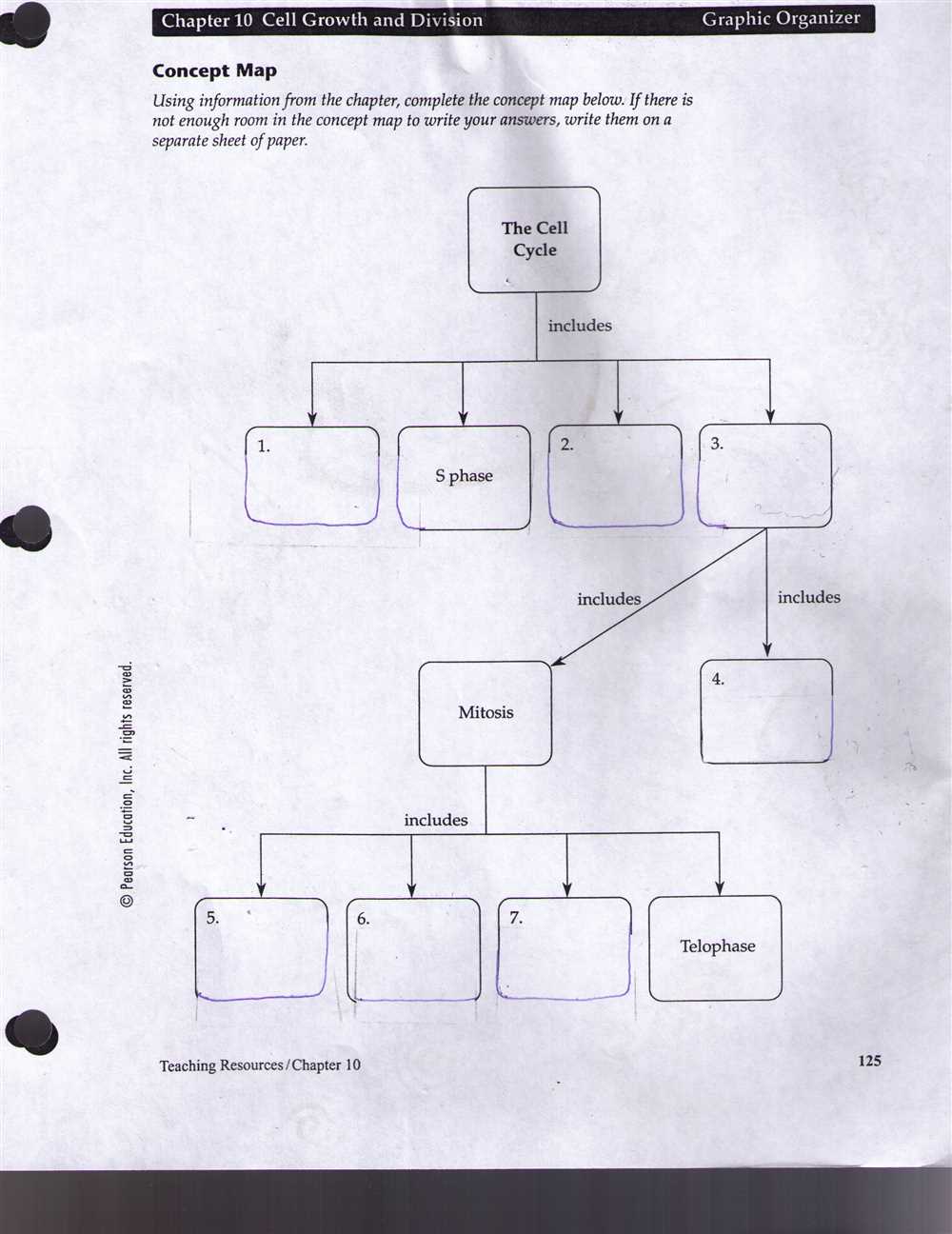
Ecological succession is a fascinating process that occurs in ecosystems over time. It refers to the gradual change in the composition and structure of a community as it transitions from one state to another. This process is driven by various ecological factors, such as changes in environmental conditions and the interactions between different species.
The Amoeba Sisters have created an ecological succession worksheet that helps students understand this complex phenomenon. By answering the questions in this worksheet, students can gain a deeper understanding of the different stages of ecological succession and the factors that drive each stage. The Amoeba Sisters provide detailed answers and explanations that make this topic more accessible to students.
The worksheet covers key concepts, such as primary and secondary succession, pioneer species, climax communities, and the role of disturbance in shaping ecosystems. Through the Amoeba Sisters’ engaging and informative videos, students can learn about the processes and patterns of ecological succession in a visual and interactive way.
By using the Amoeba Sisters’ ecological succession worksheet, students can strengthen their knowledge of this important ecological process. It encourages critical thinking and allows students to apply their understanding to real-life scenarios. With the Amoeba Sisters’ guidance, students can explore the wonders of ecological succession and develop a deeper appreciation for the complexity and beauty of our natural world.
What is Ecological Succession?

Ecological succession is the process by which an ecosystem undergoes changes over time, resulting in the development of a more complex and stable community of organisms. It is a natural and gradual progression that occurs in response to changes in the physical or biological factors of an environment. Ecological succession can be observed in various ecosystems, including forests, grasslands, and aquatic systems.
There are two main types of ecological succession: primary succession and secondary succession. Primary succession occurs in areas that have no previously existing communities, such as after a volcanic eruption or the formation of a new island. This type of succession starts with the colonization of pioneer species, which are able to survive in the harsh conditions of bare rock or soil. Over time, as the pioneer species die and decompose, they contribute to soil formation and create a more favorable environment for other plant species to establish and grow. Gradually, more complex communities of plants and animals develop, leading to the formation of a mature, stable ecosystem.
Secondary succession, on the other hand, occurs in areas that have been previously inhabited by communities but have been disrupted or disturbed by natural events, such as wildfires or human activities like farming or deforestation. Unlike primary succession, secondary succession starts with the presence of soil and some seeds or plant fragments that survived the disturbance. These initial colonizers quickly establish themselves and create favorable conditions for other plant species to grow. Over time, the community becomes more diverse and stable, resembling the characteristics of the original ecosystem before the disturbance.
Definition and Explanation of Ecological Succession

Ecological succession is the gradual and predictable process of change that occurs in an ecosystem over time. It refers to the sequence of events where one type of community replaces another in a particular area. This process is driven by the interactions between organisms and their environment, leading to a gradual transformation of the ecosystem.
There are two types of ecological succession: primary and secondary. Primary succession occurs in areas where no living organisms previously existed, such as newly formed volcanic islands or bare rock. It starts with pioneer species, which are the first organisms to colonize the area, often lichens or mosses. Over time, as these pioneer species die and decompose, they contribute organic matter to the soil, allowing for the growth of more complex plants. Eventually, trees and other large vegetation establish themselves, forming a mature and stable ecosystem.
On the other hand, secondary succession occurs in areas where the previous community has been disturbed or destroyed, but the soil is still intact. This can occur after a fire, a flood, or the abandonment of agricultural land. In secondary succession, the process is faster than in primary succession because the soil already contains nutrients and there may be dormant seeds or roots waiting to sprout. Weeds and grasses are usually the first to grow, followed by shrubs and eventually trees.
Ecological succession is an essential natural process that allows ecosystems to recover and adapt to changes in their environment. It plays a vital role in maintaining biodiversity, as different stages of succession support different species. Understanding ecological succession is crucial for conservation efforts and ecosystem management, as it helps us recognize the importance of preserving natural areas and allowing them to undergo natural processes of change and regeneration.
The Importance of Studying Ecological Succession
Understanding ecological succession is essential for scientists and researchers in various fields. Ecological succession refers to the process by which an ecosystem undergoes changes in its species composition and abundance over time. This process can be influenced by various factors, such as disturbances, climate change, and human activities.
One reason why studying ecological succession is important is that it provides insights into the natural processes that shape ecosystems. By observing how different species interact and replace each other in an ecosystem, scientists can gain a deeper understanding of the complex relationships and dynamics that exist within these systems. This knowledge can be used to inform conservation efforts, land management practices, and restoration projects.
- Conservation: Studying ecological succession can help identify critical points in a succession where intervention may be needed to prevent the loss of important species or habitats. By understanding the natural progressions of ecosystems, conservationists can develop strategies to protect and restore biodiversity.
- Land Management: Ecological succession studies can inform land management practices, such as forestry and agriculture, by providing insights into the types of species that are most likely to succeed in a given area. This knowledge can help optimize land use and minimize the negative impacts of human activities.
- Restoration: Ecological succession is often used as a framework for ecological restoration projects. By understanding the sequence of species that naturally occur and the processes that drive succession, scientists can better design and implement restoration strategies to recreate ecosystems that have been degraded or destroyed.
In conclusion, studying ecological succession is crucial for understanding and managing ecosystems. It provides valuable insights into the natural processes that shape these systems and helps inform conservation, land management, and restoration efforts. By studying ecological succession, scientists can work towards creating a more sustainable and resilient future for our planet.
Types of Ecological Succession
The process of ecological succession refers to the gradual change in an ecosystem over time. There are two main types of ecological succession: primary succession and secondary succession.
Primary succession occurs in an area where there is no soil or existing community. This type of succession usually begins with the colonization of bare rock or the aftermath of a volcanic eruption. Over time, as weathering breaks down the rock and organic matter accumulates, the area becomes suitable for the growth of plants and other organisms.
Secondary succession occurs in an area that has been disturbed or destroyed, but still retains some soil or remnants of the previous community. This type of succession occurs more rapidly than primary succession because some of the soil and organisms are already present. Examples of disturbances that can lead to secondary succession include forest fires, hurricanes, and human activities like agriculture or logging.
- In primary succession, the first organisms to colonize the area are usually pioneer species, such as lichens or mosses, that can tolerate harsh conditions and help break down the rock.
- As the pioneer species die and decompose, they contribute to the formation of organic matter and soil, creating suitable conditions for the growth of other plants like grasses and shrubs.
- Eventually, as more organic matter accumulates and the soil becomes richer, larger plants like trees can establish themselves in the area.
- This process continues over many years, with different species replacing each other and the ecosystem becoming more diverse and stable.
In contrast, secondary succession often starts with the rapid growth of herbaceous plants and shrubs that can take advantage of available nutrients and sunlight. These early successional species are then replaced by taller trees and other woody plants as the soil continues to develop and conditions become more favorable.
In conclusion, primary and secondary succession are both important processes that contribute to the dynamics and resilience of ecosystems. By understanding the different types of ecological succession, scientists and conservationists can better manage and restore damaged or disrupted ecosystems.
Primary Succession

Primary succession is a type of ecological succession that occurs in an area where there is no soil or vegetation present. This can happen after a volcanic eruption, a retreating glacier, or on newly formed volcanic islands. The process of primary succession starts with the colonization of pioneer species, such as lichens and mosses, which are able to survive in harsh conditions with minimal nutrients.
Over time, these pioneer species begin to break down the rock and create soil, allowing for the growth of other plants. As the soil becomes richer and more nutrients are available, larger plants like grasses, shrubs, and trees can start to colonize the area. This process can take hundreds or even thousands of years, as it relies on the slow breakdown of rock and the accumulation of organic matter in the soil.
In primary succession, the initial stages of colonization can be quite challenging for organisms due to the lack of resources and extreme conditions. However, over time, the ecosystem becomes more diverse and complex as more species are able to establish themselves and interact with each other. Eventually, a mature and stable community, known as a climax community, is reached.
Primary succession plays a crucial role in the development and maintenance of ecosystems. It allows for the colonization and adaptation of new species, contributing to biodiversity and resilience. Understanding the process of primary succession is important for conservation efforts and the restoration of damaged ecosystems, as it provides insights into how natural communities develop and evolve over time.
Secondary Succession
In the process of secondary succession, an ecosystem goes through a series of changes after a disturbance has occurred that has removed most or all of the existing plant and animal populations. This could be due to events like wildfires, hurricanes, or human activities such as clear-cutting or mining. Unlike primary succession, which starts from bare rock or soil, secondary succession begins on preexisting soil.
When the disturbance occurs, it leaves behind seeds, dormant buds, or underground plant structures that act as sources for the initial regrowth. Pioneer species, such as grasses or small shrubs, are the first to colonize the area. They are well-adapted to harsh conditions and help to modify the environment by adding organic matter and improving soil structure. As pioneer species establish themselves, they create more favorable conditions for other plants to grow.
Over time, the community composition changes as a result of interactions between plants, animals, and the environment. The process of secondary succession may take several decades or even centuries to reach a stable climax community, which is the final stage of ecological succession. The climax community represents a relatively stable and diverse community of plants and animals that are in balance with the environment.
Secondary succession plays a crucial role in ecosystem regeneration and recovery. It helps restore biodiversity, rebuild soil structure, and provide habitat for a variety of organisms. Understanding the process of secondary succession is essential for managing and restoring ecosystems that have been disturbed by natural or human-induced events.
Factors Affecting Ecological Succession

Ecological succession is the process by which an ecosystem undergoes changes over time. It is influenced by several factors that can either speed up or slow down the rate of succession. One key factor that affects ecological succession is the presence of pioneer species.
Pioneer species are the first organisms to colonize a disturbed or barren area. They are usually characterized by their ability to tolerate harsh conditions, such as lack of nutrients or extreme temperatures. These pioneer species help to prepare the environment for other, more specialized species to come in and take over. They contribute to the development of soil and increase the availability of resources for other organisms.
The availability of resources is another important factor affecting ecological succession. As pioneer species begin to establish, they start to modify the environment by adding organic matter to the soil. This organic matter acts as a nutrient source for other plants that come in later stages of succession. Additionally, the availability of sunlight, water, and space also determine which species can survive and thrive in a given area.
Disturbances, both natural and human-caused, play a significant role in shaping the trajectory of ecological succession. Natural disturbances such as wildfires, hurricanes, or volcanic eruptions can create opportunities for new organisms to colonize an area. On the other hand, human activities like deforestation or urban development can disrupt natural succession patterns and introduce non-native species that may outcompete native ones.
In conclusion, ecological succession is a dynamic process influenced by various factors. Pioneer species, resource availability, and disturbances all play a crucial role in shaping the patterns and rates of succession. Understanding these factors is important for managing ecosystems and promoting biodiversity in an ever-changing world.